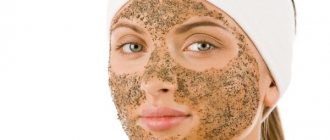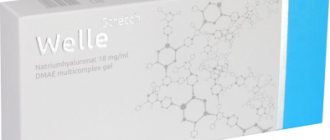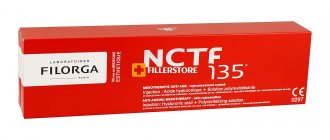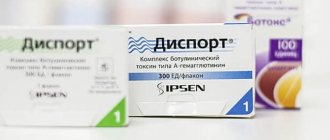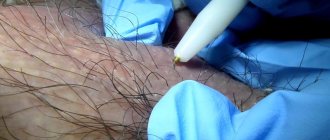There can be many reasons to get a tattoo. A significant event, a fateful meeting, a desire to imprint the name of a loved one on the body, or simply to stand out from the crowd - a tattoo gives everyone even more individuality. But there are times when you need to get rid of a drawing on your body. And given that it is applied under the skin, removal may be difficult.
Modern laser tattoo removal technology will help solve the problem. How does it work, how safe is it, how is it carried out and what results should you expect? Artem Sokolov , an expert in the field of tattoo removal, answers your questions .
Tattoo removal techniques
Previously, improvised means were used to combine drawings on the body. They used iodine, potassium permanganate, even milk, but this, of course, did not help to brighten the image. On the contrary, the tattoo remained, but a pigment spot, scar or burn scar formed around it.
With the development of medicine and cosmetology, laser technologies began to be used for this purpose. The first ruby or alexandrite type devices turned out to be dangerous for the skin. When they tried to influence the coloring pigment, they caused damage to soft tissues and long-term non-healing wounds. Therefore, the procedure for laser tattoo removal has had a bad reputation for a long time.
Today, specialists in this field use completely different equipment. Lasers operating in nanosecond mode have taken the place of dangerous devices. They generate a beam that affects soft tissue for 0.3-0.8 nanoseconds. It penetrates the skin to a depth of 4-6 millimeters and effectively destroys the coloring pigment.
from the personal archive of Artem Sokolov /
What influences the effect
The tattoo itself
Everything matters: the color and chemical composition of the ink Tattoos: From Ancient Practice to Modern Treatment Dilemma; area and location of the tattoo; how long ago it was made; the degree of skin damage during the application process - the depth of the pigment and the presence of scars; what tool was used for application?
Skin type
The degree of skin pigmentation matters: whether it is dark or light. You can remove unnecessary decoration from skin of any color, but the operating mode of the device must correspond to it. Skin health is also important.
Laser
The selectivity and efficiency of a laser depends on such indicators of its operation as wavelength and pulse duration.
Ideally, to destroy all possible colors of dye and minimally damage the skin, energy with a strictly defined wavelength is required Tattoos: From Ancient Practice to Modern Treatment Dilemma, which is not always possible. Therefore, some tattoo inks are more difficult to remove. Black pigment is the easiest to remove.
The gold standard for laser tattoo removal is the use of QS lasers (Q-Switch is one of the characteristics of a modern device) with the function of selecting the wavelength of laser radiation to match the color of the skin and ink, with a pulse duration measured in nanoseconds (1 × 10−9 seconds). Several procedures are required, once a month.
For the most modern and efficient lasers, which are particularly suitable for the removal of high-quality professional tattoos, the pulse duration is measured in picoseconds (trillionths). fraction of a second, 1 10−12 seconds).
What you need to know about laser tattoo removal
The principle of operation of a laser beam is simple: heat from the infrared spectrum is absorbed by the tattoo pigment and splits it. Small particles are removed from the body by the lymphatic system. Thanks to this, the pattern gradually brightens and disappears, while no external traces of exposure remain on the skin.
“Today you can remove any tattoo except a white one,” comments expert Artem Sokolov. “No laser in the world can handle this color yet. Appropriate equipment is used to remove pigment of different colors. A neodymium laser allows you to get rid of red and black colors to zero. And a picosecond laser for tattoo removal can cope with any color: green, blue, yellow, which were previously difficult to work with.”
Duration of removal
How many laser sessions are required depends on:
- depth of paint;
- type of radiation;
- colors used in drawing;
- tattoo area.
It is easier to remove permanent makeup; 1 - 2 sessions are enough for this. Removing colored tattoos with a laser can take up to 3 to 5 procedures if they are cold shades . It takes longer to get rid of red, orange, black colors - up to 10 sessions. There should be a break of 1.5 - 2 months between procedures. During these pauses, the artificial pigment is broken down and removed through the lymph.
The session itself lasts from 5 to 30 minutes. Its duration depends on the size of the tattoo and the patient’s sensitivity to pain.
Features of the procedure
The procedure is carried out in an equipped room. The patient sits in a chair and reveals to the artist the area of the body from which the tattoo needs to be removed. The specialist selects the laser operating mode, sets the depth of exposure, and, if necessary, uses special attachments and filters.
The procedure cannot be called pleasant: the laser beam heats the pigment, which can cause discomfort and burning. To reduce discomfort, a specialist can use a cryogenic unit, which blows icy air onto the treated area of skin, making the procedure more comfortable.
You won't be able to get rid of the drawing in one go. Tattoo removal with a neodymium laser is carried out in several sessions. With each session the pattern will become lighter until it disappears completely.
“There are many factors that influence the speed of tattoo removal,” comments Artem Sokolov. “These include the characteristics of a person’s metabolism, the location of the tattoo, the color with which it is applied, the characteristics of the pigment, the depth and density of its occurrence. Even the age of the tattoo has an effect. On average, 4–12 sessions are needed.”
from the personal archive of Artem Sokolov /
Drawings on the arms, legs and chest disappear faster, and on white skin they lighten more actively than on dark skin. If the tattoo is a couple of years old, it will take more time to work with it: in recent years, artists in this field have begun to use permanent dyes, which take longer to break down. The color of the paint also matters: dark ones fade faster, light ones are more stable.
Despite all these factors, an experienced specialist will help you completely get rid of the annoying pattern on any part of the body.
YAG FQ015
In last place in our rating is the neodymium laser device YAG FQ015, which belongs to class D. The wavelength can be different - 1064/532/1320 nanometers.
The power of the laser system is 800 watts. The device is highly effective; the client does not experience any discomfort during the treatment. The laser device affects only the pigment, without affecting other tissues. As a result, the device prevents the occurrence of burns. The lamp operates without interruption for a long time. Static activity is ensured by a high-quality handpiece. The device is designed for transportation, so the technician can work from home. Despite the fact that a laser device is quite expensive, its purchase will be a profitable investment, since the device will quickly pay for itself.
Together with the device itself, the kit includes:
- Laser key
- Pedal
- Case with glasses for master and client
- Cord
- Funnel for pouring liquid
- Nano gel with carbon
- Device for regulating wave length (three pieces)
- Settings Menu (English)
- Documents confirming quality
Contraindications
“The procedure cannot be performed during pregnancy and lactation,” clarifies expert Artem Sokolov. “And before doing this, you should consult a doctor, especially if you have chronic diseases.”
Your doctor may recommend refusing the procedure if:
- long-term non-healing wounds on the skin;
- diabetes mellitus;
- skin diseases - allergic rashes, dermatitis, eczema;
- during acute viral diseases, especially during exacerbation of herpes infection.
You cannot use a laser device to remove tattoos if a person has an artificial heart rate driver and there are implants or metal prostheses in the treatment area. If the patient has previously had a lift with “golden threads”, the laser beam can destroy them. It is also worth refusing the procedure if you have an individual tendency to form scars on the skin or increased fragility of blood vessels.
from the personal archive of Artem Sokolov /
from the personal archive of Artem Sokolov /
Laser tattoo removal and its contraindications
Despite the apparent safety of the modern method, laser tattoo removal has its contraindications. These include:
- injuries and violations of the integrity of the skin;
- chemical and thermal burns;
- psoriasis, dermatitis, neurodermatitis and similar diseases;
- cancer and some forms of diabetes;
- viral and other infections - AIDS, hepatitis;
- blood pathologies and acute conditions - fever;
- disruptions in the functioning of the cardiovascular system;
- epilepsy and exacerbation of chronic diseases;
- female risk factors - pregnancy, breastfeeding, menstruation.
Also, persons under the influence of drugs or intoxicated are not allowed to undergo the tattoo removal procedure.
Before carrying out such a procedure, you should carefully study the contraindications.
How to choose a master
“The choice of a specialist largely determines the effectiveness and safety of the procedure,” clarifies Artem Sokolov. - If an experienced master works with you, who uses professional equipment, there will be no marks, no scars, no crusts left on the skin. If the technician does not understand what he is doing - he simply read the instructions for the device or watched a video on the Internet - he can cause serious harm. If you choose the wrong power of the device, it is easy to burn your skin. This will lead to burns, scars, and tissue compactions. And after some time, a scar forms at the site of the tattoo.”
To make sure of the professionalism of the master, you should ask him to show his certificates, and before the procedure, read reviews about him on the Internet. You can also use the professional chat of tattoo removal specialists on Instagram.
“We have created an association of professionals in the field of tattoo removal,” continues Artem Sokolov. — In our community there are more than a thousand specialists from different cities of Russia and CIS countries. You can write to us and ask any question you are interested in about the features of the procedure, technique, risks. And we will recommend a professional in your city who can help you get rid of your tattoo safely.”
What to prepare for
The procedure has contraindications
There are common ones, for example: heart and vascular diseases, mental illnesses, pregnancy, skin diseases and others. There are also individual ones. If you had an intolerance reaction when getting a tattoo, which later went away, then after laser removal, the allergy may return in a more severe and dangerous form.
Several visits to a cosmetologist will be required
Quick, complete removal of a tattoo is impossible—practitioners honestly say this. According to the study Laser Treatment of Professional Tattoos With a 1064/532-nm Dual-Wavelength Picosecond Laser, you need to perform an average of 7-8 procedures with an interval of about a month between them.
This is a long and painstaking work, so you will need patience, perseverance and, of course, material costs, and from a specialist - knowledge and skill. Much depends on technical equipment.
The tattoo already fades greatly during the procedure, but, unfortunately, this effect is short-lived. And after about 15 minutes the color will return, becoming only slightly lighter. It's better to know about this in advance.
The process may hurt
To combat pain, doctors use various methods of local anesthesia (to reduce the intensity of the sensations themselves) in combination with mild sedatives to relieve stress on the patient and reduce the perception of pain.
Cosmetologists work with an air cooling unit, which reduces pain using a stream of cold air (temperature from -30 to -60 °C). This relatively new method is called Pneumatic skin flattening (PSF) in English. It has already received positive evaluations in the Pain inhibition in Q-switched laser tattoo removal with pneumatic skin flattening (PSF): a pilot study. .
In a simplified form, local cooling is carried out using ice packs. Creams with anesthetics Comparison of lidocaine/tetracaine cream and lidocaine/prilocaine cream for local anaesthesia during laser treatment of acne keloidalis nuchae and tattoo removal: results of two randomized controlled trials are also applied to the skin. .
Sometimes they practice injections - injections of a drug (for example, lidocaine) into the skin of the tattoo area.
The laser itself also affects pain. Modern devices cause less damage to the skin around the tattoo.
How does a laser work?
The essence of the method is the penetration of laser beams into the deep layers of the epidermis, where coloring pigments are located. Under the influence of laser irradiation, dyes disintegrate into microscopic particles, which after a short period of time are released naturally through the lymph. It will take no more than a month to remove stubborn tattoos. During this time, the tattoo will gradually fade until it disappears completely. An interesting fact is that the laser beam affects only the subcutaneous cellular structures, without affecting the surface ones, which is why after tattooing there are no traces left.
Alexandrite laser
The penetration depth of this beam is also low - up to 1.8 mm, which will not allow it to remove a black, green, blue or orange tattoo from the deep layers of the skin.
The energy of this laser, as in the first case, is absorbed by melanin, so the laser can only be used on skin of phototypes I-II (very light). When used on darker skin, the same complications can develop as when using a ruby laser. Alexandrite devices are also difficult to adjust for each color tattoo. The procedures are painful, the interval between them is at least a month.
How to care for your skin after getting a tattoo
Despite the safety of the procedure, some side effects occur after it is performed: swelling, redness, swelling, etc., touching the skin is often painful. To speed up the healing process, cosmetologists advise wiping the skin with a solution of chlorhexidine or miramistin instead of the usual washing, applying soothing creams and ointments based on panthenol, and protecting the treated area of skin from exposure to direct sunlight, wind and cold. After a week, you can apply skin moisturizers. Do not peel off any crusts that appear; after a certain period of time they will come off on their own. In some cases, when the tattoo has been removed on open areas of the skin, it is recommended to apply sunscreen.
Picosecond laser: no hassle with tattoo removal
You can remove a colored tattoo using a brand new technology – the Picosure picosecond laser. It sends pulses into tissue lasting several trillionths of a second. This does not heat the skin, but creates an acoustic wave in it, which crushes the tattoo into tiny particles - much smaller in size than when exposed to other lasers. Such “specks of dust” are removed much faster by the lymphatic system, therefore, complete removal requires 2-3 times fewer procedures than with other laser treatments.
A photoacoustic wave destroys pigments of any color, including green and blue. Picosure even removes tattoos that have stopped responding to another laser. At the same time, the risk of scars and burns is practically zero, in contrast to procedures with other devices. And the pain of the session, during which the skin does not heat up, is also much lower.
Neodymium laser for tattoo removal. FAQ.
The neodymium laser is perhaps the best tool for tattoo removal. Neodymium laser is a logical addition to any tattoo studio or beauty salon. Modern lasers are affordable, pay for themselves fairly quickly and begin to generate income. They are easy to learn and use, safe and durable. All of the above is true if competent, trained personnel operate the laser. A non-professional can turn a laser into a dangerous weapon that can cause irreparable harm to both the operator and your clients. Please remember that only qualified personnel should operate neodymium lasers.
Who needs laser tattoo removal?
About half of the people who once got a tattoo sooner or later have a desire to get rid of it. The motives for getting rid of a tattoo can be completely different. For one, a drawing on the body prevents them from finding a prestigious job or making a career, another is simply tired of it, a third is not satisfied with the quality of execution, a fourth has generally changed their worldview with age, and a fifth realized that the tattoo was “stuffed” under the influence of momentary emotions, along the way of which the drawing has become irrelevant. Everyone has their own reason. This should be remembered by anyone who is about to decide to apply a tattoo to their body. However, not everyone decides to have a tattoo removed. The most common fears were the fear of severe pain (here the process of applying a tattoo comes to mind), and the risk that the procedure may be unsuccessful - scars will remain in place of the design, or the design will not come off completely. Representatives of the fair sex are especially susceptible to these fears. On the other side of the scale lies what made a person think about removing a body tattoo - and sooner or later, this dilemma is resolved in favor of removing what was previously proudly called a tattoo, but is now perceived as a mistake of youth. Nowadays, we can confidently say that these fears are largely relics of the past. No, tattoo removal has not become painless, and the risk of failure during this procedure has not been reduced to zero. Neodymium lasers have replaced outdated methods of tattoo removal.
Why laser?
The advent of compact, relatively inexpensive, efficient neodymium lasers has radically changed the body art removal industry. Vaporization, a method created with the help of such lasers, has become a real discovery for those who want to get rid of tattoos. The essence of this method is that special high-frequency radiation affects only the tattoo pigment, which is deposited in the deeper layers of the skin. As a result, it is possible to destroy the coloring pigment. At the same time, not even a hint of scars remains on the body. Destroyed, literally crushed particles of pigment are eliminated from the body naturally. The physical capabilities of a neodymium laser are limited. So, with its help you can only get rid of tattoos made by professional artists. Inexperienced amateurs or beginners often inject pigment too deep into the skin for the laser to physically penetrate its particles. Selective photocavitation is a method that is similar to vaporization. Just like vaporization, this method is also based on the ability of a laser beam to easily penetrate the surface of the skin and not damage it. During selective photocavitation, a laser beam affects only the tattoo pigment of a certain color, causing the destruction of its particles. The resulting particles are eliminated from the body through natural metabolism. The risk of damage to the skin is almost zero if tattoo removal with a neodymium laser is carried out by an experienced tattoo artist.
Is it painful to remove a tattoo with a laser?
During the operation of a neodymium laser, the client naturally experiences pain. The tissue healing process after laser tattoo removal is much easier than after older, more barbaric removal methods. In general, the pain from laser removal is comparable to the pain from getting a tattoo. If you can withstand the process of applying a design, then you can withstand its removal. It all depends on the pain threshold - as you know, it is individual for each person. In addition, the pain sensation is affected by the selected area of the body.
How long does the laser tattoo removal procedure take?
The duration of the procedure depends on a number of indicators. The most important are the area of the tattoo, the type of pigment that was used, and the depth of its penetration. If the drawing is amateur and made with black ink, then it usually takes from 2 to 8 sessions to remove it. If we are talking about a multi-color image made by a professional, then the initial result will be noticeable after the 5th session, and the final result is achieved by the 13th -15th session. You should not try to speed up this process - any haste can lead to a decrease in the quality of work and the formation of scars. Therefore, the recommended break is at least one month between sessions. As a result, the entire process of tattoo removal can take a year or even more. Some believe that the master removes the design on the body in parts, that is, fragment by fragment. Actually this is not true. The pigment gradually fades until it becomes invisible or disappears completely. Inevitably, tattoo removal with a neodymium laser does not have a positive effect on the skin. Its texture, density, and color may change. Patients often develop red spots. However, the symptoms listed are temporary and usually go away within 2-3 weeks without any treatment. The use of a neodymium laser for tattoo removal is considered the safest method for removing tattoos.
Do I need any special preparation for laser tattoo removal?
At the place where the tattoo will be removed, you should shave the hair, degrease and clean the skin with alcohol. Also, there should be no deodorant, oils or other perfumes and cosmetics in this place. The cleaner the skin is before the procedure, the better it will be.
How to care for your skin after the procedure?
Be sure to protect the area of skin exposed to laser radiation from direct sunlight for two weeks. To do this, use sunscreen (not to be confused with tanning cream), the protection factor of which is at least 30. Also, for several days, any injury to the skin in this area is not allowed.
Who is contraindicated for laser tattoo removal?
A neodymium laser cannot be used if the integrity of the skin in the area to be treated is damaged. The cause of such damage can be trauma, thermal or chemical burns, infections, as well as various diseases, including psoriasis, neurodermatitis and others. Among the contraindications to the use of laser tattoo removal are some forms of diabetes, epilepsy, cancer and dangerous viral infections such as hepatitis and AIDS. All persons who have pathologies of the blood and cardiovascular system should also refrain from the procedure. Contraindications to the laser tattoo removal procedure include so-called “acute conditions” (for example, fever), as well as exacerbations of any chronic diseases. Women should take special care. Pregnancy, breastfeeding and menstruation are considered significant risk factors. Persons under the influence of alcohol or drugs are not allowed to undergo tattoo removal with a neodymium laser.
Is it worth purchasing a neodymium laser?
Buying a neodymium laser is a very profitable investment. The number of people wanting to get a tattoo has been growing for a long time - naturally, the number of people wanting to get rid of body tattoos has begun to grow. Progress played a significant role in this. Anesthetics removed pain as an integral factor in applying a tattoo, and it became much easier for people to decide on such a change in their appearance. The neodymium laser produced exactly the same effect in the area of tattoo removal. A neodymium laser usually pays for itself in a month or two. The economics of this service are in many ways similar to the economics of tattooing. Several long sessions are required, and the process itself is very extended in time - over time, this begins to provide a stable flow of revenue.
Our online store offers a wide range of neodymium and cosmetic lasers, as well as components and accessories for them. Our consultants are ready to provide any assistance in choosing and purchasing this device. Contact us!
How does the procedure work?
You may be interested in: Laser eyebrow tattoo removal
The patient's skin is first cleaned of any kind of contaminants. For those who are susceptible to pain or have a large pattern, a cream or gel with an anesthetic is applied, which is removed approximately half an hour after application.
After removing the anesthetic composition, the skin is treated with an antiseptic solution and the tattoo removal procedure begins, using a laser beam through a special attachment.
A stream of cool air, which is supplied directly to the area affected by the neodymium laser, helps relieve pain and reduce discomfort.
The duration of the procedure depends on the area of the tattoo, the depth of the coloring pigment, the quality of the paint, etc.
The result of tattoo removal with a neodymium laser after seven procedures
